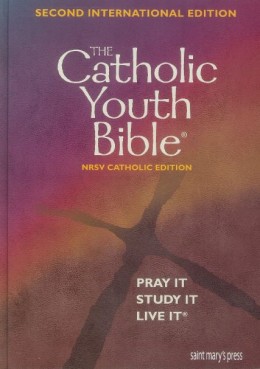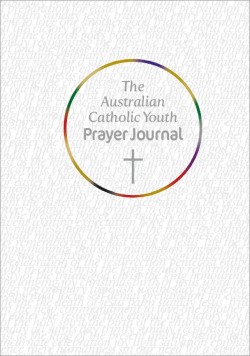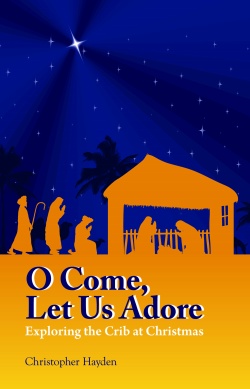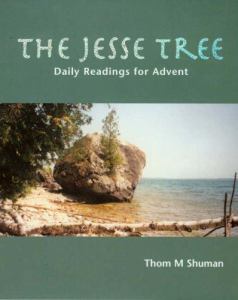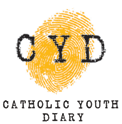- Home
- Issue 10: Care for Our Home
- Issue 9: Eco-Spirituality
- Issue 8: Interfaith Understanding
- Archives
- About us
- Contact
For Secondary
The following resources are designed to assist you in the RE classroom in celebrating Christmas in a multi-faith country.
‘Just over two-thousand years ago, a young Hebrew woman bore her first child. This child was a refugee-a child under threat. Mary, Joseph and infant Jesus had to flee. As we cherish again the stories of the holy family – perhaps this Christmas we can re-imagine that birth and journey and align it more readily and sympathetically with the journeys of those who look for welcome on our shores’ Ann Rennie, The Australian Catholic Youth Prayer Journal
Christmas: Joy to the World
Lord of great joy,
Let us celebrate together,
knowing that we are imperfect and tired and unsure sometimes,
But that we can renew enthusiasm and commitment as we come together
as family, friends and faith communities.
Move us from the quarrels and slights and misunderstandings of the year
so that cheer and charity of the Christmas season unfolds in peace and good will to all.
Ever remind us that joy is a free gift that we can give and receive.
It is wrapped in love and cannot be refunded.
It is one gift that can be re-gifted again and again.
Lord of great joy, we thank you and celebrate as your people gathered together in faith.
Amen.
Ann M. Rennie The Australian Catholic Youth Prayer Journal, p. 24
Other Prayers
The Shehechiyanu
Jewish prayer of joy: a blessing
Blessed are You,
Lord our God,
King of the universe,
who has kept us alive,
and sustained us,
and enabled us to reach this moment.
The Buddha’s Blessing
Now may every living thing,
Young or old,
Weak or strong,
Living near or far,
Known or unknown,
Living or departed or yet unborn,
May every living thing be full of bliss.
V.M. Parachin, Prayers from Around the World and Across the Ages, p. 88
Suggestions on how to use these Prayers
Each of these blessings and prayers focuses on ‘joy’ and ‘bliss’.
In the scriptures, the birth of Jesus is one of joy. Jesus IS joy.
‘And the angel said unto them, ‘Do not be afraid;
for see, I am bringing you good news of great joy
for all people.
To you is born this day in the city of David a Saviour,
who is the Messiah, the Lord.’
Luke 2:10–11
See The Catholic Youth Bible (p. 1207)
Compare the words and emotions in the above prayers and blessings.
- What do they have in common?
- In what ways do they represent our tradition of Christmas in its pure essence of joy and giving?
- How do we carry the feeling of Christmas joy in our hearts all year round?
- What is your favourite Christmas carol? Write down the lyrics and explain why it gives you an emotional connection.
Non-religious faith traditions: The Indigenous
‘There is a battle of two wolves inside us all.
One is evil.
It is anger, jealousy, greed, resentment, lies, inferiority and ego.
The other is good.
It is joy, peace, love, hope, humility, kindness, empathy and truth.
The wolf that wins? The one you feed.’
Cherokee quote
You may wish to print this quote—it is freely available on the internet.
- How does this ‘pagan’ view of joy differ from the other prayers above?
- Do you agree with the Cherokee view of internal struggle?
- How is the language appropriate for the culture of the Cherokee people? How is our language appropriate for our Christian culture when we look at Christmas carols and bible scriptures? Do you think we need to change the language but keep the meaning? How do we do this?
- Write your own reflection or prayer on joy and the gifts that Christmas allows us to bring into our lives.
Scripture & Bible Literacy
The birth of Jesus in a place far from home…
The Jesus birth story can be divided into four parts to explain the Christmas story.
1. The Foretelling of Jesus’ Birth
Angel Gabriel tells Mary about giving birth to a baby boy who would be called Jesus or Immanuel (God is with us).
Read Luke 1: 26–38, see The Catholic Youth Bible (p. 1205)
The Old Testament had prophesised a king would come—a saviour—from the lineage of King David.
Read Isaiah 7:14; 9:6; Micah 5:2, see The Catholic Youth Bible (p. 841)
Prophecy fulfilled.
Read Matthew 1:18–23; Luke 1: 26–31, see The Catholic Youth Bible (pp. 1122–1125)
(a) Research historically what was happening to the Jewish people at this time and why they were waiting so desperately for a new king.
2. Jesus’ Birth
Why there was no room at the inn and how Jesus was born in a stable and placed inside the manger.
Read Luke 2: 1–7, see The Catholic Youth Bible (p. 1207)
Bethlehem was the holy city, known as the city of David. It was prophesised that Jesus would be born there and, being a descendant of King David, it would stand to reason he was the king the Jews were waiting for.
Read Matthew 2: 4–6, see The Catholic Youth Bible (p. 1124)
(b) Research: Census in the Roman world. Is there an historical basis to the story that Joseph and Mary had to go to Bethlehem for a census? Was it required that one had to go home to be counted?
If this has no historical basis, does the story have merit at a faith level?
3. Shepherds: the shepherds come and worship at the stable where Jesus is born after the angels appear to them.
Read Luke 2: 8–20, see The Catholic Youth Bible (p. 1208)
The shepherds featured prominently in Luke’s Gospel. Was it a metaphor for Jesus, as the Good shepherd, who came to all those who were outcasts, marginalised or who had left the ‘flock’?
In Jesus’ time, shepherds were nomads, what we call Bedouins today, and were not trusted by the local people.
‘They were outsiders, literally and metaphorically ‘out there’, out of sight, out of hearing, out of mind, beyond the edges of civilized society … this new ‘king’ could not be more different from the ‘divine’ Augustus (Roman Emperor)! Indeed he turns all notions of kingship and of … sovereignty on their heads.’
T. Dennis, The Christmas Stories, p. 113
‘The shepherds bring no gifts with them. That is not necessary … they should do God’s work. And they do so, “making known” what he has “made known to them”.’
T. Dennis, The Christmas Stories, p. 116
(c ) Research the role of Bedouins, nomads and shepherds in the time of Christ. Who were the other outsiders? Why was it important for Luke to emphasise that Jesus’ kingship was first revealed to shepherds—the least important ‘subjects’?
4. Three Wise Men: three wise men from the east who come bearing gifts to baby Jesus and why they need to keep it a secret from King Herod.
Read Matthew 2: 1–12, see The Catholic Youth Bible (p. 1124)
January 6 is called the Epiphany, a celebration of the Wise Men’s arrival. ‘The Wise Men’ comes from the ancient word, ‘magi’, meaning sages, magicians or miracle workers or astrologers. They were more likely to have been what we call astronomers.
According to tradition, they followed a star they saw from their home somewhere east of the Roman Empire’s borders in Palestine. Historians and astronomers believe the star was a line-up of several planets that occurred in 7 or 6 BC (Scholars believe there was a counting error with Jesus’ year of birth).
The magi were powerful men that not only watched the heavens, they could predict the fall and rise of kings. Each of the gifts of the wise men therefore has a particular significance.
‘Gold is a gift fit for a king, and on their arrival in Jerusalem, the wise men made it clear that had come to do homage to the King of the Jews.’
C. Hayden, O Come, Let Us Adore, p. 33
(d) Research: Who were the 3 wise men? Where had they come from? Why did they bring gifts? Why were these gifts (list the three gifts) relevant?
(e) Read Matthew’s Gospel and interpret the scene of the magi literally, answering the questions above. Then, search the internet for historical references to the story.
(f) Compare the two versions. What conclusions do you make about the magi and their existence? Can it be taken metaphorically? If so, what did it mean to the listeners of the gospels of the day? In other words, what was the message Matthew and Luke were trying to give early Christians?
(g) Buddha’s birth was also unusual. Look up details of Buddha’s birth and compare and contrast to Jesus’ circumstances. What conclusions do you draw from your research?
Suggested Classroom Activities
Facts and inquiry worksheet ~ Christmas in a multi faith community
Only Christians celebrate the birth of Christ at Christmas. Other faith traditions and secularists take the public holidays given at Christmas but not as a celebration of the birth of Christ.
How do other faiths celebrate their own feast days that coincide with the Christmas season (Nov–Dec)?
Jewish
The Jewish feast day of Hanukkah occurs around the same time as Christmas. It is known as the Jewish Festival of Lights. Small gifts and/or money are given to children by family members.
Muslim
Eid al-Adha (Eid-ul-Adha) is known as the Feast of Sacrifice or Festival of Sacrifice. Many Muslims go to pray at mosques and other appropriate venues during Eid al-Adha. People also exchange gifts with one another and celebrate together.
Hindu
The Hindu also have a festival of lights, called Diwali. Many events take place at public venues and in homes during this time in which lights, lanterns, and candles are lit. Gifts are also exchanged.
Buddhist
Bodhi Day honours the enlightenment of Siddhartha Gautama, the Buddha. The day is observed in many ways, including prayer, meditation and teachings. Some exchange gifts.
Use this site below or similar sites that discuss religious feast days in Australia.
http://www.timeanddate.com/holidays/australia/eid-al-adha
To do:
1. Fill in the information for each religious feast day.
Include facts such as:
- How the day is celebrated
- The background of the feast day
- Religious observance and symbolism.
2. What is ‘light’ in Christianity?
Jesus says, “I am the light of the world”.
Light in the physical world reveals and helps us to see where we are going or what’s ahead. Jesus brings all things to the light—he reveals to people what they would rather not see and shows us the truth. He represents the truth.
Other faith traditions use ‘light’ for symbols of:
- Hope
- Joy
- Celebration
- Reverence
- Remembrance
- Prayer
(a) Fill in your own meaning of ‘light’ and look at words we use in secular life: ‘the light went on’, ‘I’m switched on’, ‘a light bulb moment’, ‘you’re the light in my life’.
2. Group Work Set up a Marketplace of World Religions with the common theme of LIGHT.
– Hanukkah (tea candles, oil lamps)
– Diwali (tea candles, paper lanterns)
– Christmas (candles and Christmas lights and decorations)
– Bodhi Day (coloured lights strung about the home or in a tree)
– Eid al-Adha (mosques are decorated with bright lights and fire crackers are set off in the evening)
(a) At each market ‘stall’, choose one religion and describe what the ‘light’ represents in that feast day. Collect appropriate candles and bright lights to make your point. Your audience may be younger students or your classmates.
3. The Commercialisation and Secularisation of Christmas
Many of the above faith traditions have the practice of giving gifts on the feast days. However, it’s the excessive Christmas giving that causes the most stress in Western countries.
(a) What is the point of giving gifts? What is the idea of Santa?
(b) Why has it become a commercial venture and not a religious observance? Research on the net what people spend at Christmas.
(c) Australia is a Christian country with a secular government. How does this cause confusion at Christmas among communities? Should nativity plays be banned in government schools?
(d) What is the percentage of the secular population in Australia? Why do they celebrate Christmas with gift giving if they don’t have the Christian faith?
(e) Ask a non-Christian about whether they feel pressured to buy gifts at Christmas regardless of their beliefs?
(f) Watch the series on the ABC called ‘Holy Switch’ http://www.abc.net.au/compass/s3752649.htm
‘Six different faiths, six young Australians … What will happen when they switch lives for two weeks?’
(g) Discuss.
*Excellent Reference: The Third Space series, published by Garratt Publishing, made up of individual stories of young people from various religious backgrounds.
4. Buddha’s Day
(a) Read this year’s Buddha’s Day celebrated in Melbourne this year. Compare the celebrations and origins with the Christmas story.
http://www.buddhaday.org.au/index.html
Lesson Plan
The lesson plan for Christmas is available from the button below.


